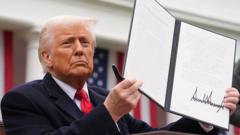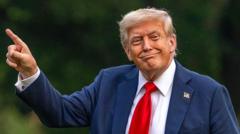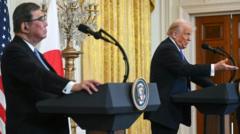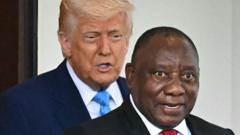In a significant turn of events, the U.S. and China have moved from tariff disputes to a strategic battle over technological and resource access, focusing on critical industries impacted by supply chain disruptions.
U.S.-China Supply Chain Battle Escalates Beyond Tariffs

U.S.-China Supply Chain Battle Escalates Beyond Tariffs
The ongoing trade conflict between the U.S. and China is evolving into a fierce struggle for global supply chain control, raising concerns across multiple industries.
The trade tensions between the United States and China have taken a new direction, shifting from tariff disputes to a more insidious approach involving control over global supply chains. Both nations are now engaging in a tug-of-war over essential technologies and resources that could have profound implications for various industries.
Recently, the United States halted exports of specific components and software that are crucial for jet engines and semiconductors. This decision came as a reaction to China's restrictions on exporting rare earth minerals vital for manufacturing a range of products. Accusations of bad faith have flown between the two powers, highlighting the deepening mistrust that defines their economic relationship.
This emerging supply chain warfare adds another layer to the existing tariffs imposed on each other's imports and has left manufacturers on edge. Companies reliant on parts from both countries are expressing concern over the potential disruptions to their production processes. Washington's officials are increasingly anxious about China's capacity to leverage its dominance in other critical sectors, such as pharmaceuticals and shipping.
The aviation industry, in particular, finds itself caught in this conflict, serving as both a pawn and a target. While American firms like General Electric provide key jet engine technology and navigation systems, the production of these engines also hinges on rare earth minerals predominantly processed in China. As China imposed export bans on these critical materials earlier this year in response to rising tariffs, the implications for the manufacturing landscape grow more serious by the day.
The precarious nature of this situation underscores how intertwined the U.S. and Chinese economies remain, despite their rising hostilities. Both nations now face an uncertain future as they navigate this complex web of dependencies in a rapidly transforming trade environment.





















